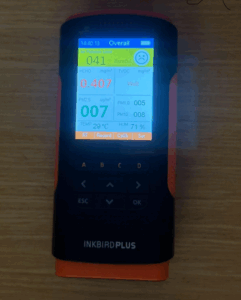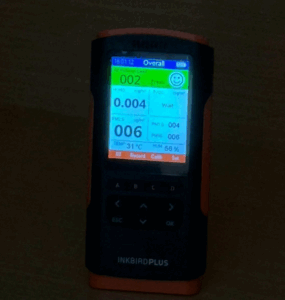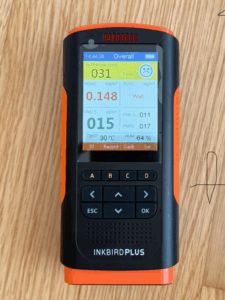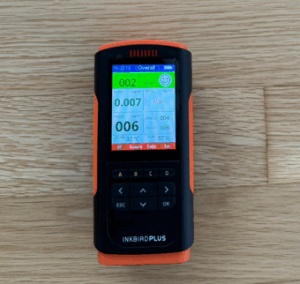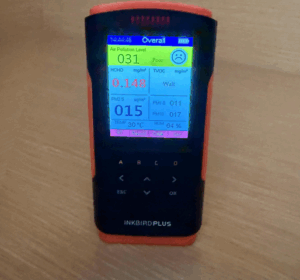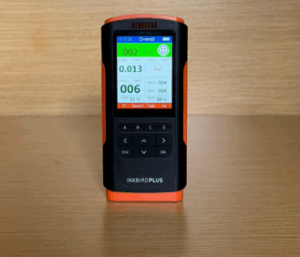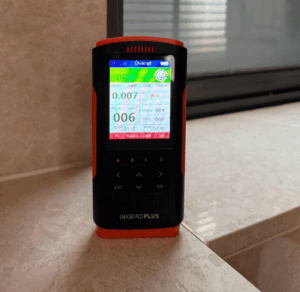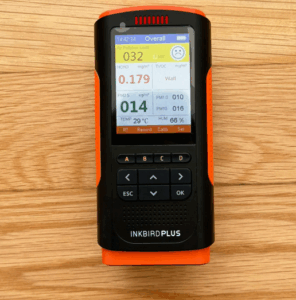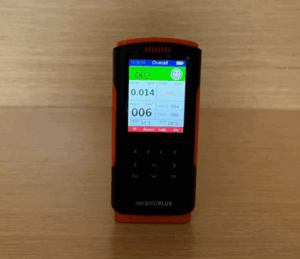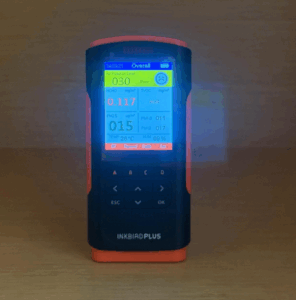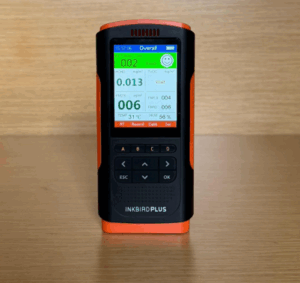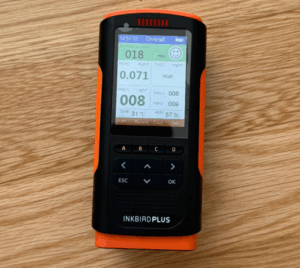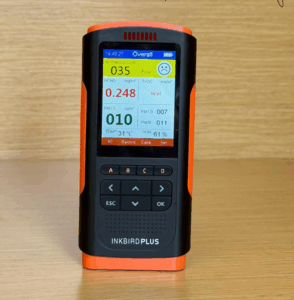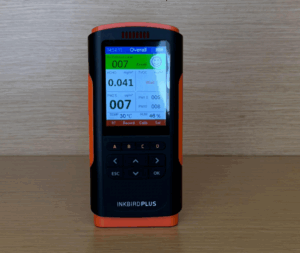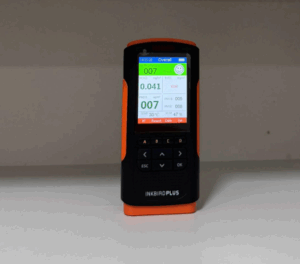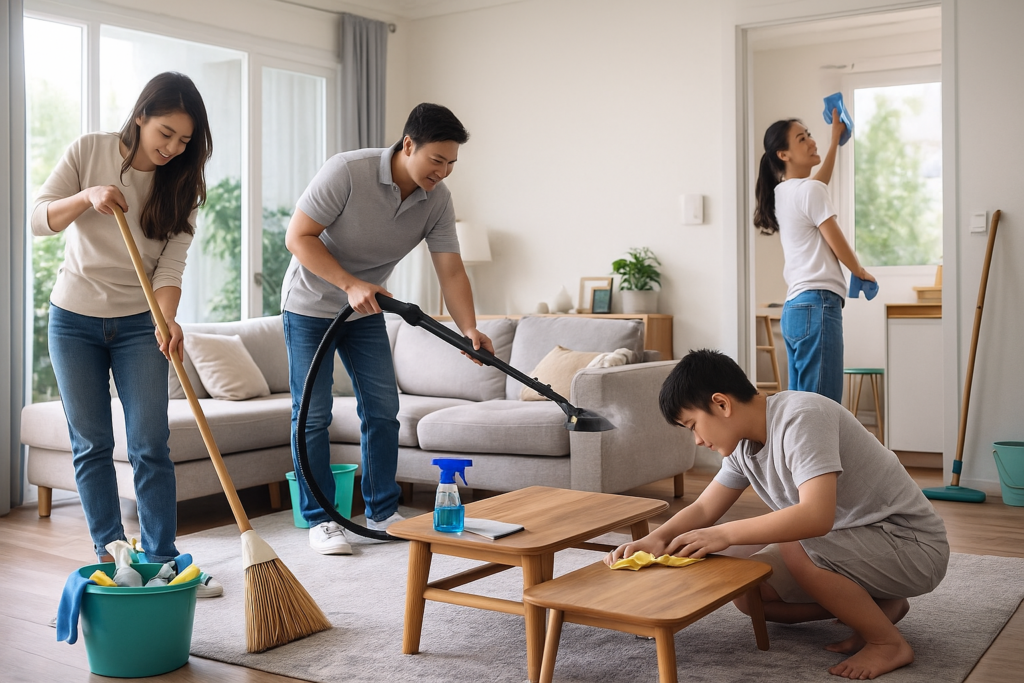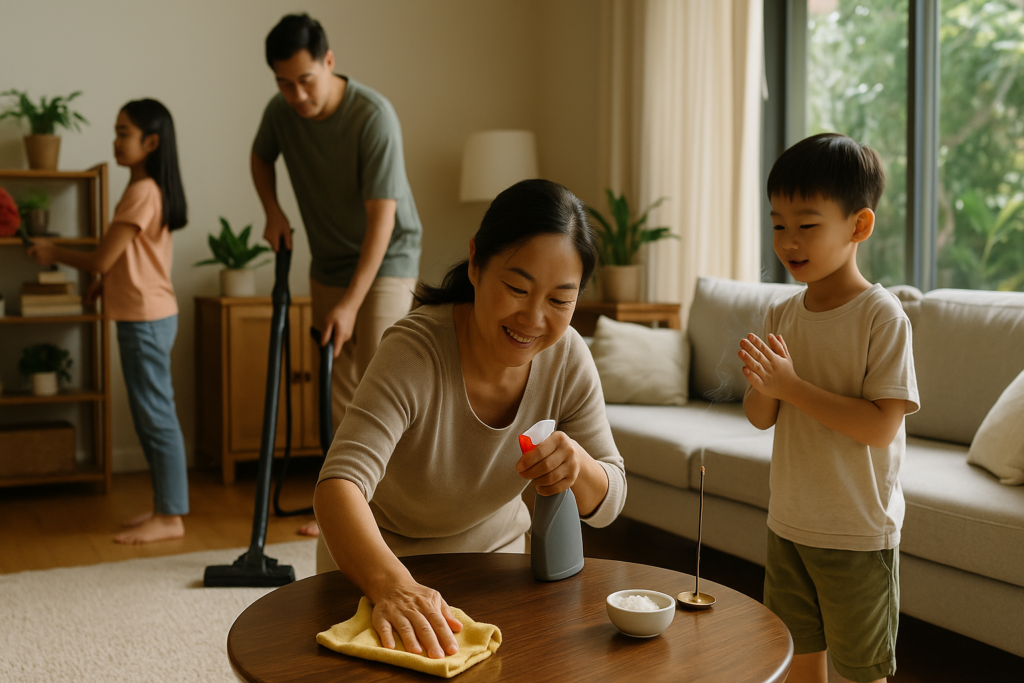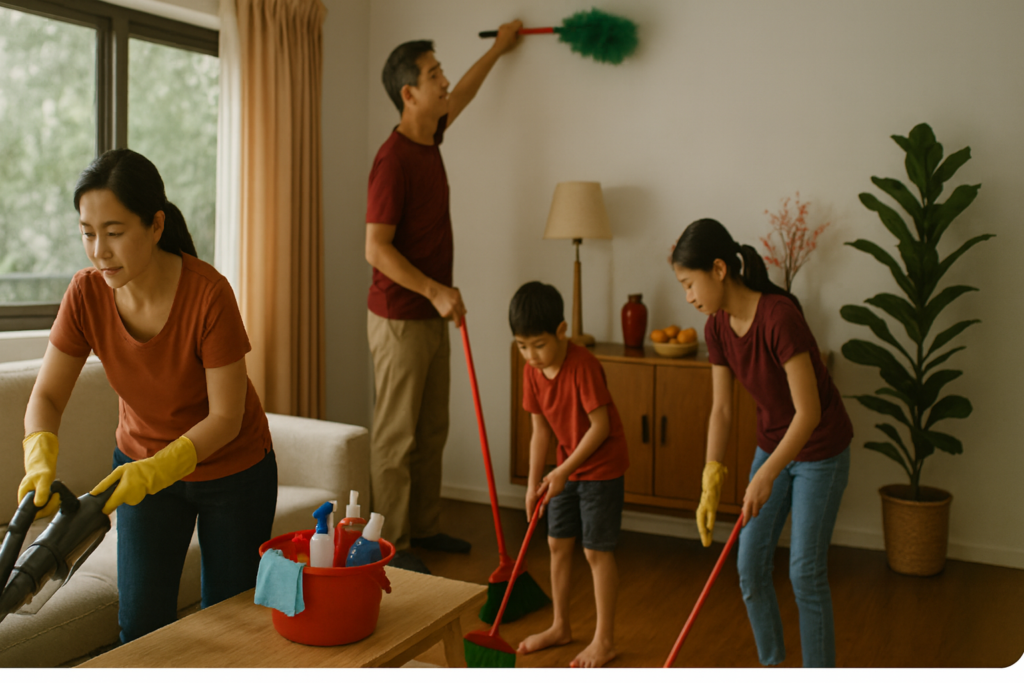Formaldehyde is a common indoor air pollutant found in furniture, paints, and building materials, especially in newly renovated spaces. Prolonged exposure can irritate the eyes, nose, and throat, and in higher concentrations, it’s linked to more serious long-term health risks.
A homeowner, concerned about lingering chemical odours and possible health effects after renovation, reached out to Total Cleanz for professional formaldehyde removal. Our goal is to restore safe air quality using our proven FormaClear solution.
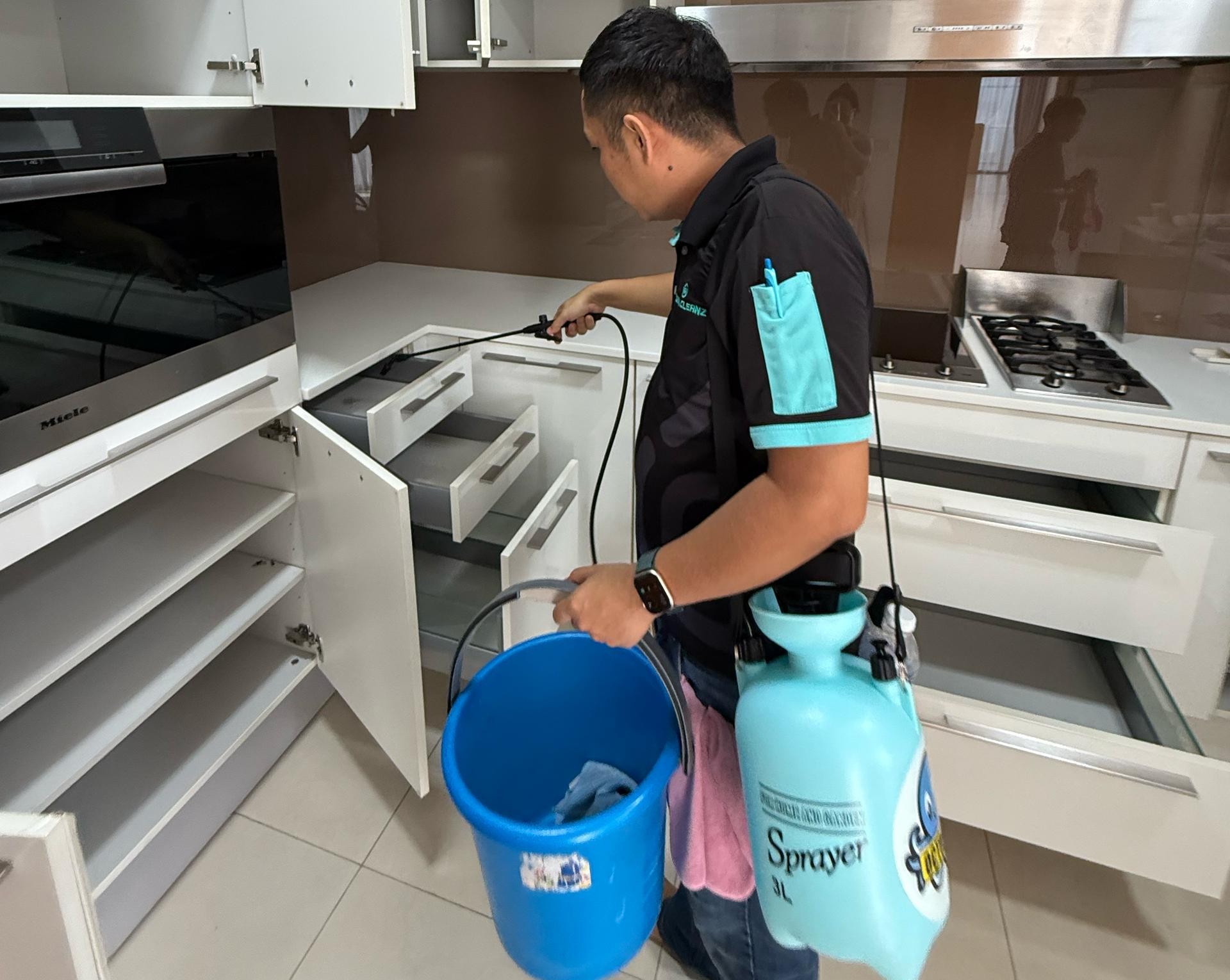
The Client’s Concern: High VOCs After Renovation
This residential unit at Urban Suites had recently undergone interior renovations. Before moving in, the homeowners noticed a strong chemical smell throughout the space. After spending some time inside, they began experiencing dizziness, which raised concerns about the indoor air quality. As the family was planning to have young children stay in the home, they sought a professional assessment to ensure a safe living environment.
Although the unit had not yet been occupied, the concern was urgent, particularly in the bedrooms, where the smell was most intense. Total Cleanz was engaged to carry out a formaldehyde inspection and treatment to address the issue before move-in.
The client requested a full indoor air quality assessment and treatment to ensure the space would be safe for occupancy.
Initial readings confirmed elevated levels, particularly in enclosed areas such as the master bedroom cabinet, which recorded 0.407 mg/m³, more than four times Singapore’s recommended indoor formaldehyde limit of 0.1 mg/m³.
Indoor Air Quality Standards in Singapore
In Singapore, the National Environment Agency (NEA) adopts formaldehyde exposure guidelines that are aligned with the World Health Organisation (WHO). For air-conditioned indoor environments (such as homes, offices, and commercial spaces), the recommended limit for formaldehyde is 0.1 mg/m³ (or 0.08 parts per million [ppm]).
This standard is designed to:
- Protect against both short- and long-term health risks,
- Provide safe indoor air quality for sensitive groups like children and the elderly,
- Ensure a comfortable and healthy living environment post-renovation.
In the case study at this suite, Total Cleanz aimed to bring the indoor formaldehyde levels well below the 0.1 mg/m³ threshold, in line with these health-based standards.
Step-by-Step Formaldehyde Removal Process
Total Cleanz followed a structured process to ensure comprehensive coverage and measurable results:
Step 1 – Assessment and Baseline Readings
Our team began by inspecting and testing various indoor surfaces using a digital formaldehyde monitor. We recorded the levels in high-risk areas, such as built-in cabinets, drawers, and wooden flooring, and shared the data with the client before proceeding. This ensures every client knows the starting condition of their indoor air quality.
Step 2 – Professional Application of Formaldehyde Remover
We used FormaClear, a water-based formaldehyde neutraliser, to treat all identified surfaces. The application focused on enclosed wooden spaces such as cabinet interiors, drawer units, and corners where VOCs often accumulate.
The area was then ventilated to allow the solution to activate effectively over 30–45 minutes.
Step 3 – Re-Testing and Results Verification
After sufficient activation time, our team conducted a second round of air quality testing using the same device and locations. The updated readings showed significant reductions, often over 90% in many areas. These were documented and shared directly with the Homeowner.
Impressive Results: Over 90% Formaldehyde Reduction in Most Rooms
We recorded a significant drop in formaldehyde levels across the unit, with most areas showing above 90% reduction. In some locations, such as the master bedroom cabinet, levels dropped by over 99%, from 0.407 mg/m³ to just 0.004 mg/m³.
Area
Before(mg/m³)
After (mg/m³)
Result (%)
Master bedroom floor
0.168
0.016
Reduced 0.152mg/m³; 90.47% for master bedroom floor.
Master bedroom cabinet
0.407
0.004
Reduced 0.403mg/m³; 99.01% for master bedroom cabinet.
2nd bedroom floor
0.148
0.007
Reduced 0.141mg/m³; 95.27% for 2nd bedroom floor.
2nd bedroom cabinet
0.148
0.013
Reduced 0.135mg/m³; 91.21% for 2nd bedroom cabinet.
2nd bedroom toilet
0.133
0.007
Reduced 0.126mg/m³; 94.73% for 2nd bedroom toilet.
3rd bedroom floor
0.179
0.014
Reduced 0.165mg/m³; 92.17% for 3rd bedroom floor.
3rd bedroom cabinet
0.117
0.013
Reduced 0.104mg/m³; 88.89% for 3rd bedroom cabinet.
4th bedroom floor
0.071
0.021
Reduced 0.05mg/m³; 70.42% for 4th bedroom floor
4th bedroom cabinet
0.248
0.013
Reduced 0.235mg/m³; 94.75% for 4th bedroom cabinet
Living room cabinet
0.041
0.014
Reduced 0.027mg/m³; 65.85% for living room cabinet
Kitchen cabinet
0.041
0.008

Reduced 0.033mg/m³; 80.48% for kitchen cabinet
Why Formaldehyde Removal Matters
Formaldehyde exposure can trigger respiratory issues, allergic reactions, and in some cases, contribute to long-term health complications. It’s especially risky for children, seniors, or individuals with pre-existing respiratory conditions.
In Singapore, the NEA recommends maintaining indoor levels below 0.1 mg/m³, and our remediation methods consistently help clients meet or exceed this standard.
Why Formaldehyde Lingers Post-Renovation
Even after a full renovation is completed, harmful indoor air pollutants like formaldehyde may still be present due to a process known as off-gassing. This refers to the slow release of volatile organic compounds (VOCs) from construction materials, adhesives, sealants, varnishes, and furniture.
Common Sources of Formaldehyde Emissions:
- Pressed wood products (e.g., plywood, particleboard, MDF)
- Laminated cabinets and wardrobes
- Freshly varnished wooden flooring
- Paints, coatings, and adhesives used during renovation
Although the chemical application significantly reduces VOC levels, formaldehyde can continue to be released slowly over time, especially in enclosed, air-conditioned environments. This is why residual traces may remain, and further precautions may be necessary.
Ventilation Tips After Treatment
To help maintain safe indoor air quality and support the effectiveness of the treatment, we recommend the following post-service steps:
- Keep treated cabinets and drawers open for at least 24–48 hours, where possible.
- Use fans or open windows to promote air exchange and circulation.
- Run air purifiers with formaldehyde or VOC filters if available.
- Avoid sealing treated areas too early, especially with plastic or airtight coverings.
These steps help disperse any remaining emissions and allow the treatment to continue acting on hidden VOC sources.
When Secondary Applications Are Needed
In some cases, particularly when initial readings are significantly above the safe limit (0.1 mg/m³), a secondary application may be advised. This is not uncommon for:
- Larger furniture with heavy laminate use
- Tight, unventilated spaces such as storerooms or walk-in wardrobes
- Recently installed materials that continue to emit gases over time
At Total Cleanz, we provide transparency in post-treatment readings and will advise if a follow-up treatment or additional ventilation support is necessary.
When to Consider Professional Formaldehyde Removal
Formaldehyde exposure isn’t always visible, but it can pose serious health risks when left untreated. A professional indoor air-quality assessment and treatment may be necessary if you encounter any of the situations below.
Common Triggers for Formaldehyde Buildup
- Recently renovated home or office, especially with new flooring, cabinets, or built-ins
- New furniture delivery, particularly laminated or pressed-wood products
- Strong chemical odour or “new paint” smell that lingers for days or weeks
- Young children, the elderly, or sensitive individuals showing signs of irritation, allergy, or headaches indoors
- Formaldehyde readings above 0.1 mg/m³, confirmed through IAQ testing
- Poor ventilation or continuous air-conditioning in enclosed spaces
- A desire to move into a freshly renovated unit with peace of mind
Why Choose a Professional Over DIY?
While home remedies such as baking soda, activated charcoal, or standalone air purifiers can help in minor cases, they often fall short against deep-seated off-gassing. Professional treatments target the root sources of VOCs—especially in built-in furniture, corners, and varnished surfaces—while providing measurable before-and-after results.
How Total Cleanz Helps
- Certified formaldehyde remover (FormaClear) applied by trained technicians
- Transparent digital readings were documented before and after treatment
- Strict IAQ procedures that prioritise safety and minimal disruption
- Tailored aftercare guidance to maintain long-term indoor air quality
What Our Client Says About the Formaldehyde Removal Process

Need Help with Indoor Air Quality?
If you’re moving into a newly renovated space or simply want assurance about the air you breathe, our formaldehyde removal service is designed to deliver fast, effective, and verifiable results. Get in touch to book an air quality inspection today



